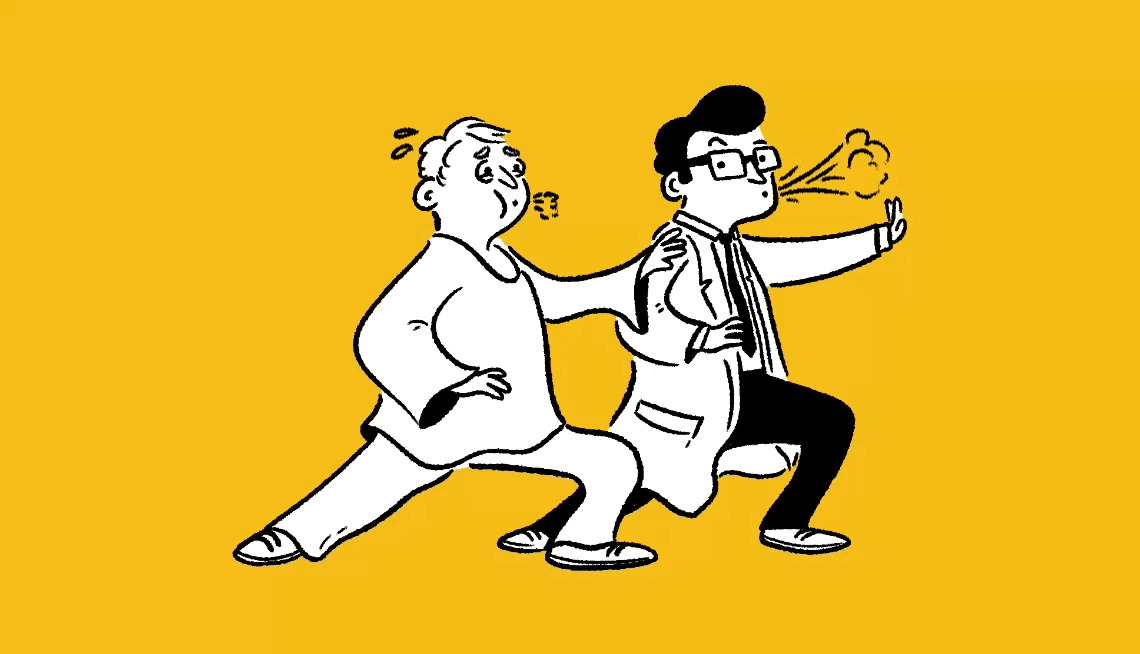AARP Hearing Center


I’ve been diagnosed with COPD. What can I do to improve my breathing?
Breathing is something most of us take for granted, until it becomes uncomfortable to do. For folks living with COPD, every inhalation may feel like an effort. But try not to be disheartened. I’ve seen firsthand how understanding this illness and working with a care team can help you breathe easier, live better and regain control of your life.
Let’s begin by going over the basics. COPD, or chronic obstructive pulmonary disease, is a lung condition that makes it harder to breathe out fully. COPD occurs when your airways (bronchi) and tiny air sacs (alveoli) become inflamed, damaged or stuck open. It might help to think of your lungs as a partially stretched-out balloon. Air can go in, but it’s harder to push it fully back out. This “air trapping” leads to shortness of breath and a feeling of not getting enough air.
You’re not alone with this condition. A large study of adults 50 years and older found that as of 2020, almost 10 percent were dealing with COPD.
What can you do to improve your breathing?
I recommend a daily practice of simple but powerful breathing exercises. Try pursed-lip breathing, which involves relaxing your shoulders and neck, then inhaling through your nose for 2 seconds (or as comfortable), then exhaling slowly through your pursed lips, as if you’re blowing out a candle, for 4 seconds, or roughly twice your inhale time.


Ask Dr. Adam
Adam B. Rosenbluth, M.D., is an internist and cardiologist in New York City. Each Monday, he’ll weigh in on your questions about how to make your body work better for you. His AARP book will be published in 2027. Join in on the conversation on social media @dradamrosenbluth to learn to move the needle on your personal health in an achievable way.
Another effective exercise involves belly breathing. Lie on your back with knees bent, and put one hand on your chest and the other on your tummy. Inhale deeply through your nose over 3 counts. Your belly should rise more than your chest. Next, exhale slowly over 6 counts using your abdominal muscles and with your lips slightly pursed. Try to gradually work up to doing this exercise for 5 to 10 minutes, 3 to 4 times a day.
A pulmonary rehab outpatient program, usually offered in a hospital or clinic, can be extremely effective. It combines supervised aerobic and strength training, education on breathing management, nutritional guidance and social support. You might also want to check out smartphone apps based on pulmonary rehab programs such as myCOPD, Kaia Breathe COPD and Lifeline Therapy’s Virtual Pulmonary Rehabilitation Program. I want to be clear that I’m not recommending any specific app.


































































You MIght Also Like
What’s Causing Your GI Issues?
Find out what can cause gas, diarrhea, nausea and other issues in your gastrointestinal tract
I Survived Breast Cancer. Is the Journey Over?
Aging sometimes brings new challenges. Here’s how to stay on top of them
AI Breakthrough Enhances Parkinson’s Treatment
New adaptive DBS technology improves patients’ lives